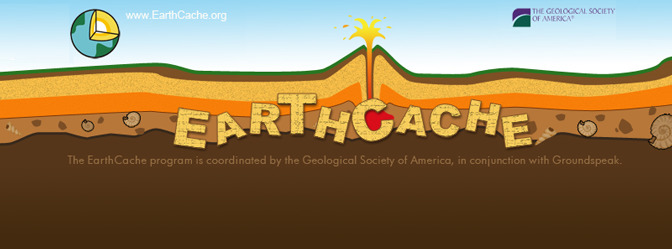
(English below)
Dieser EarthCache führt Sie ins Zentrum von Luxemburg, dessen historische Teile mit sehr interessanten Felsen gepflastert sind ...
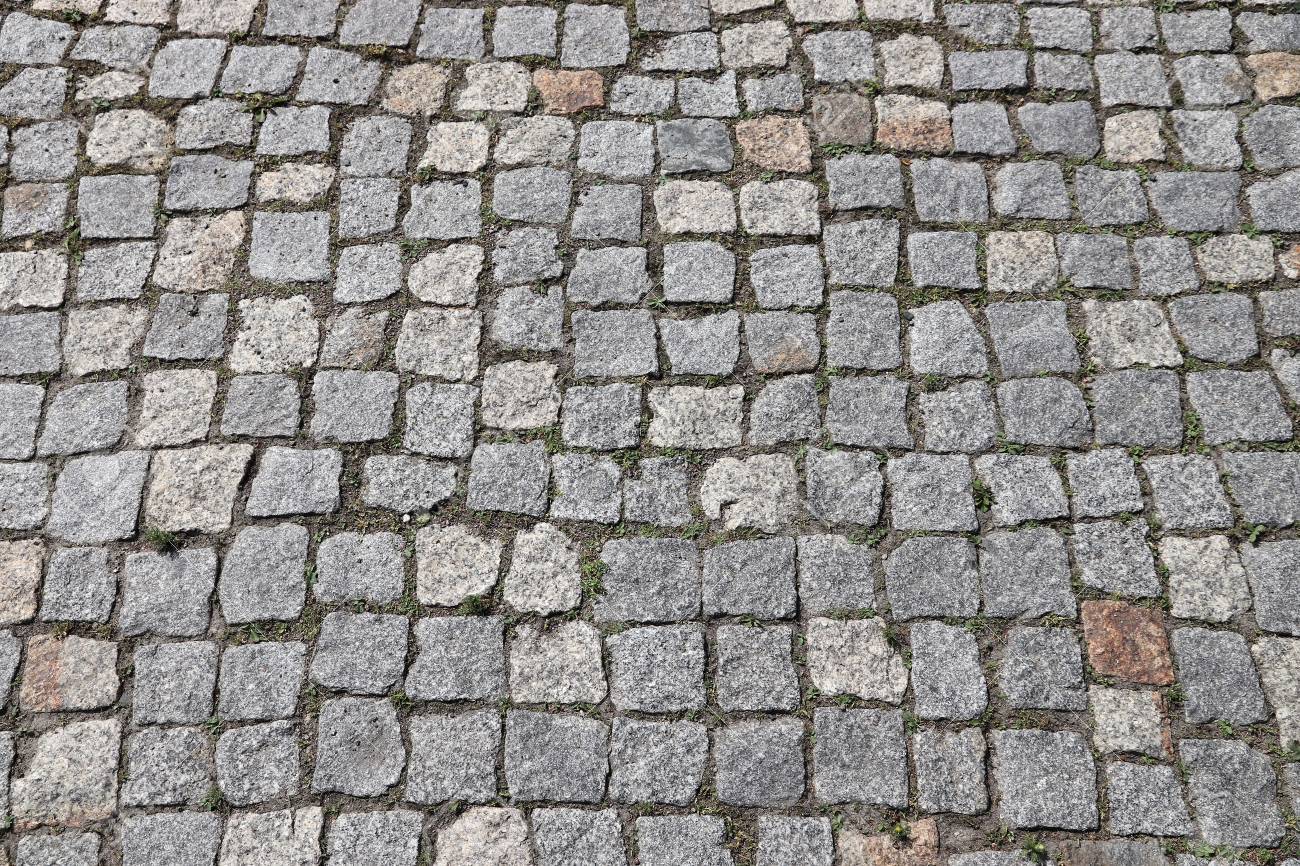
Geologie
Granite sind tiefe magmatische Gesteine, die einen erheblichen Anteil an Quarz enthalten. Granite sind normalerweise hell, gräulich oder weißlich, manchmal mit einem Blaustich. Aber auch gelbliche, rosa und rote Arten sind bekannt. Granite sind gleichmäßig omnidirektional gekörnt (euganitisch), manchmal porphyrisch. Die Struktur ist hypidiomorph körnig.
Die Dichte von Granit beträgt etwa 2,8 g/cm³. Die Trennung von Granit ist quaderförmig, etwas dicker bankförmig, es gibt auch säulenförmige und kugelförmige Trennungen, unregelmäßig polyedrische Trennungen sind typisch für faltige Bereiche.
Beim Belüften von Granit werden die ursprünglichen Kanten stark abgerundet. Daher finden sich in Felsbrocken und Felsen abgerundete Formen. Bei der Blocktrennung entstehen Findlinge mit erheblichen Abmessungen.
Granit enthält eine erhebliche Menge an Quarz und Feldspat, wobei Kaliumfeldspat gegenüber Plagioklas vorherrscht. Dies unterscheidet Granit von Granodiorit, in dem Plagioklas vorherrscht. Andere Mineralien sind Biotit, Muskovit, Turmalin, Granat usw.
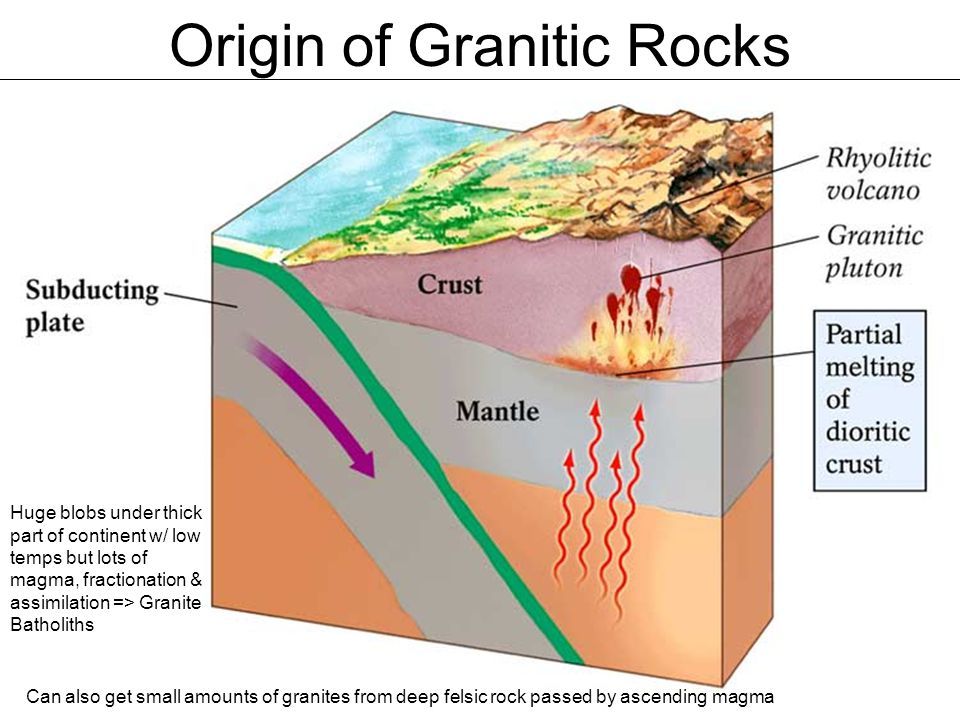
Mögliche Aufteilung
I-Granit, der durch Schmelzen von bereits existierenden Eruptivgesteinen gewonnen wird.
S-Granit, entstanden durch Schmelzen von ursprünglich Sedimentgesteinen.
Granit vom A-Typ, gebildet aus restlichen fraktionierten Kristallisationslösungen. Typisch für Riftzonen und stabile kontinentale Gebiete, anorogener Granit.
Granit vom Typ M, entstanden durch Differenzierung des obersten Mantels. die in ozeanischen Inselbögen vorkommen, sind in ihrer I-Typ-Zusammensetzung ähnlich.
Biotit-Granit, Doppelglimmer-Granit, Amphibol-Granit, Amphibol-Biotit-Granit usw. unterscheiden sich durch Beimischungen Porphyr-Granit enthält größere porphyrische Auswüchse von Orthoklas. Das Abflussäquivalent von Granit ist Rhyolith. Das venöse Äquivalent von Granit ist Granitporphyr.
Granite können auch nach Korngröße unterteilt werden:
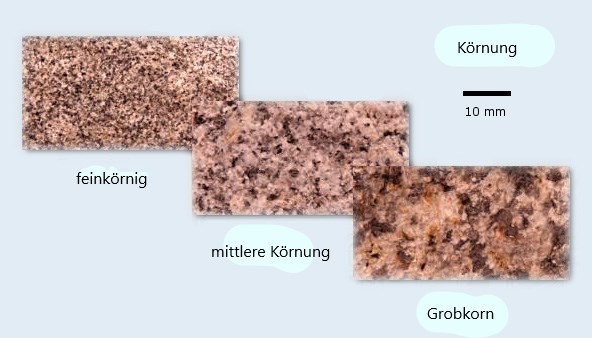
Fragen:
1. Wie ist der lokale Granit entstanden?
2. Welche Farbe hat es?
3. Welche Korngröße hat sie?
4. Nehmen Sie ein Bild mit oder mit Ihrem GPS mit Granit.
Senden Sie mir Antworten per Profil und melden Sie sich dann normal an.
Quellen: Wikipedia
English:

This EarthCache takes you to the center of Luxembourg, the historical parts of which are paved with very interesting rocks ...

Geology
Granites are deep igneous rocks that contain a significant amount of quartz. Granites are usually light, greyish, or whitish, sometimes with a bluish cast. But yellowish, pink and red species are also known. Granites are uniformly omnidirectional grained (euganitic), sometimes porphyry. The structure is hypidiomorphic granular.
The density of granite is about 2.8 g / cm³. The separation of granite is cuboid, somewhat thicker bank-shaped, there are also columnar and spherical separations, irregular polyhedral separations are typical for wrinkled areas.
When aerating granite, the original edges are rounded off sharply. Therefore, rounded shapes can be found in boulders and rocks. When the blocks are separated, boulders are created with considerable dimensions.
Granite contains a significant amount of quartz and feldspar, with potassium feldspar predominating over plagioclase. This distinguishes granite from granodiorite, in which plagioclase predominates. Other minerals are biotite, muscovite, tourmaline, garnet, etc.

Possible division
I-granite, which is obtained by melting existing igneous rocks.
S-Granite, created by melting originally sedimentary rocks.
A-type granite formed from residual fractional crystallization solutions. Typical for rift zones and stable continental areas, anorogenic granite.
Type M granite, created by differentiating the top mantle. found in oceanic island arcs are similar in their I-type composition.
Biotite granite, double mica granite, amphibole granite, amphibole biotite granite etc. differ in their admixtures Porphyry granite contains larger porphyry outgrowths from orthoclase. The runoff equivalent of granite is rhyolite. The venous equivalent of granite is granite porphyry.
Granites can also be divided according to grain size:
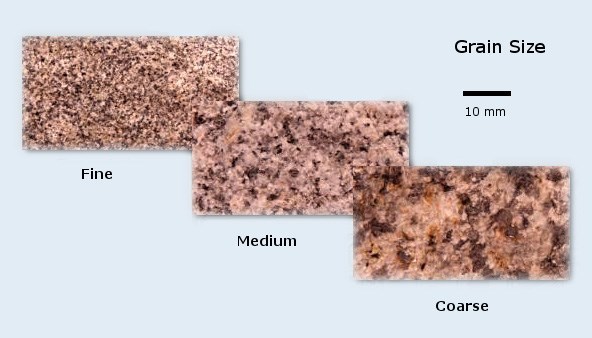
Tasks:
1. How did the local granite was created?
2. What is its color?
3. What is the grain size?
4. Take a picture with or with your GPS with granite cobblestones.
Send me replies via profile and then log in normally.
Sources: Wikipedia